News
Scubaverse Underwater Photographer Interview: Steve Jones

In an ongoing series, Scubaverse.com’s Underwater Photography Editors Nick and Caroline Robertson-Brown talk to underwater photographers from around the world that they admire.
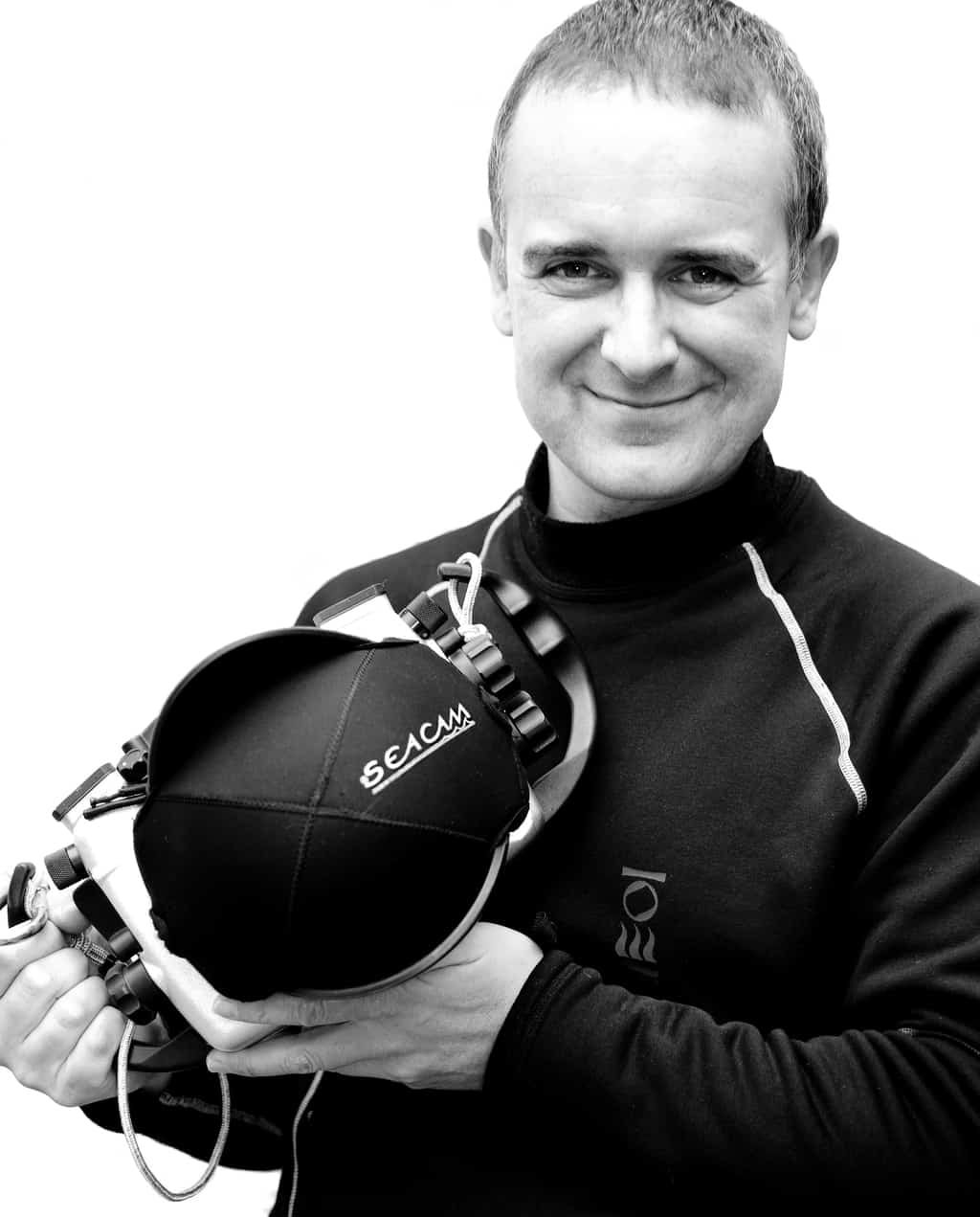 This interview is with Steve Jones.
This interview is with Steve Jones.
My professional diving career began in the early 1990’s when, immediately after university, I decided to take one year out to travel and work as a diving instructor. Seven years later, having lived and dived in Egypt, Malta, the Maldives and the Caribbean, I returned to live in the UK, somewhat reluctantly. By that time my imagery and articles were starting to appear in diving magazines, and since have gone on to be published in over 30 countries. Through photojournalism I’m very lucky to have been given the opportunity to visit places that I once only dreamed of and I’ve had to develop into an all-rounder as a photographer, equally happy writing about maritime history and photographing wrecks as I am when shooting equatorial seascapes awash with colour, or critters crawling through volcanic mud. This has led to quite a diverse portfolio and combined with my more specialist deep wreck photography led to me becoming a Blancpain Edition Fifty Fathoms photographer in 2015, one of four photographers invited annually to contribute to the fine art books produced by this high-end watchmaker. My website is at www.millionfish.com.
N/C: How did your underwater photography start?
SJ: I’ve had a fascination with both the natural world and photography since I was a child. I then learned to dive at the age of 14 but I couldn’t afford an underwater camera until I was working in the Red Sea as a diving Instructor back in 1992. I bought a second hand Nikonos III, and soon found myself assisting visiting professional photographers from whom I learned an enormous amount. It was in 1996 whilst working as an instructor/guide in the Maldives that I got my first break when German magazine Unterwasser published my images. I still regularly contribute to this excellent publication, over 20 years later
N/C: What is your favourite u/w camera equipment (past & present) & why?
SJ: I’ve used SEACAM housings since 1995 and they have never let me down. My favourite piece of kit is a SEACAM converted Nikon RS-UW 13mm fisheye lens. This was one of the original lenses designed for use on the Nikonos RS SLR, and is optimised for underwater use. SEACAM have adapted it for use on modern housed cameras. Its compactness and superb optical quality is particularly useful when technical diving on deep wrecks, where I often shoot at wide apertures due to low light conditions.
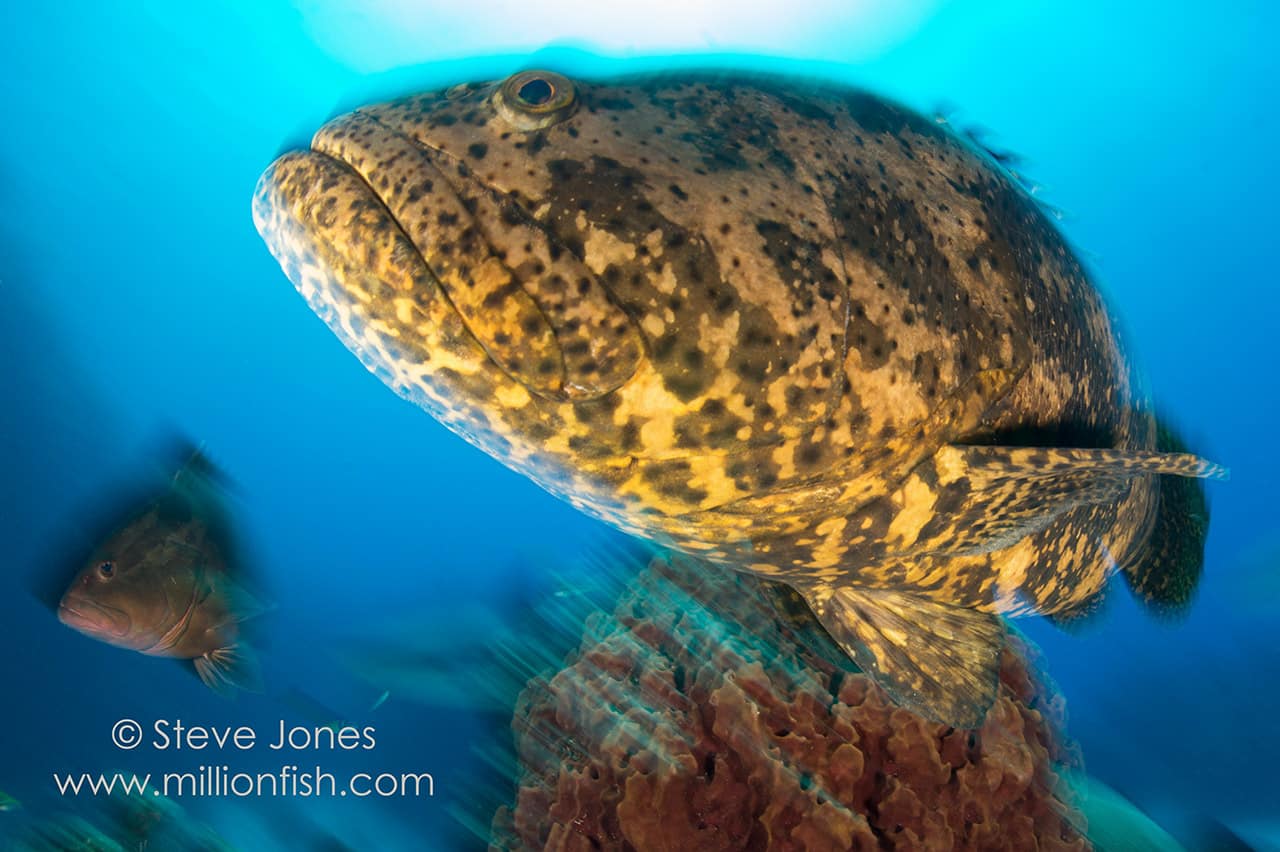
N/C: What would be your advice to anyone new to underwater photography?
SJ:
- Master your diving skills: have buoyancy control that is second to none.
- Build your technical knowledge, particularly your understanding of lighting and the influence of Aperture, Shutter Speed and ISO settings on underwater images, when used with/without strobes. Learn how to balance natural and strobe light as this is very important. Learn about editing and post processing with tools such as Lightroom.
- Study: Read books cover to cover, such as Martin Edge’s “The Underwater Photographer” and keep the kindle versions on hand to refer to whilst you’re on a trip.
- Observe: Immerse yourself in the photography of others and try and understand how the shot was taken and why it works (or not!)
- Practice constantly even on mundane subjects and also above water at every opportunity.
- Be creative and be different. Once you have mastered the basics, allow your own creative style to develop and flourish through your imagery to make it unique. Study composition techniques – there are many articles and books available written by topside and underwater photographers.
- Respect the environment and the oceans’ inhabitants, no matter how small they may be. Photography is a means to communicate the beauty and value of our marine world to those not fortunate enough to see it and as ambassadors for the ocean, our own code of conduct needs to be exemplary.
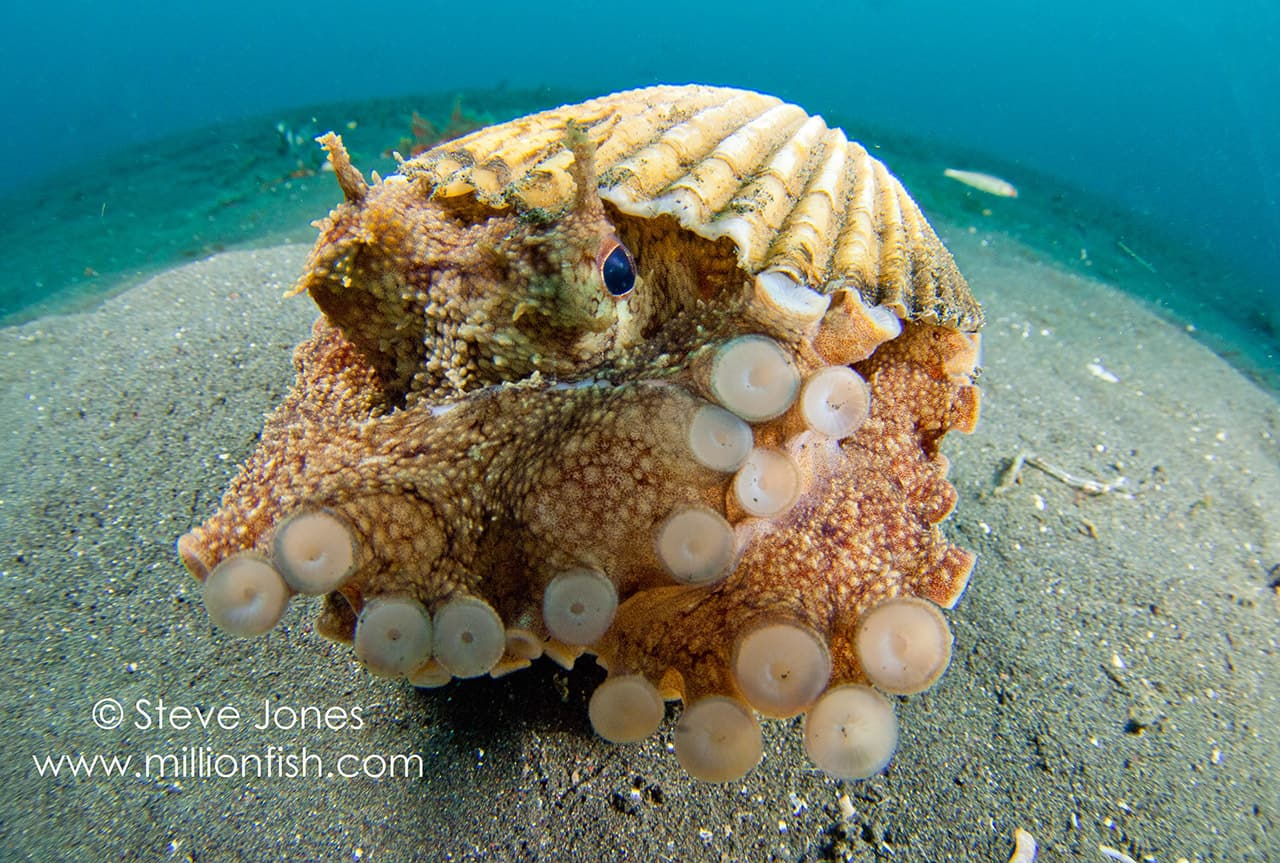
A Coconut Octopus (Amphioctopus marginatus), a species that gathers coconut and mollusc shells for shelter, Lembeh Strait, Sulawesi, Indonesia
N/C: What, or who, has been your single biggest inspiration for your underwater photography?
SJ: My biggest inspiration is my fascination with the marine world and the exploration of it. I try and create images that take the viewers imagination to the place where I took the image, to generate some of the excitement that I felt when I was there. As for photographers who’ve inspired me, David Doubilet had been my inspiration from the start, and I also admire the work of many other photographers: The ones pushing creative boundaries to capture familiar subjects in new ways and the ones pushing physical boundaries, operating in environments where previously un-photographed subjects are found. There are too many to mention here.
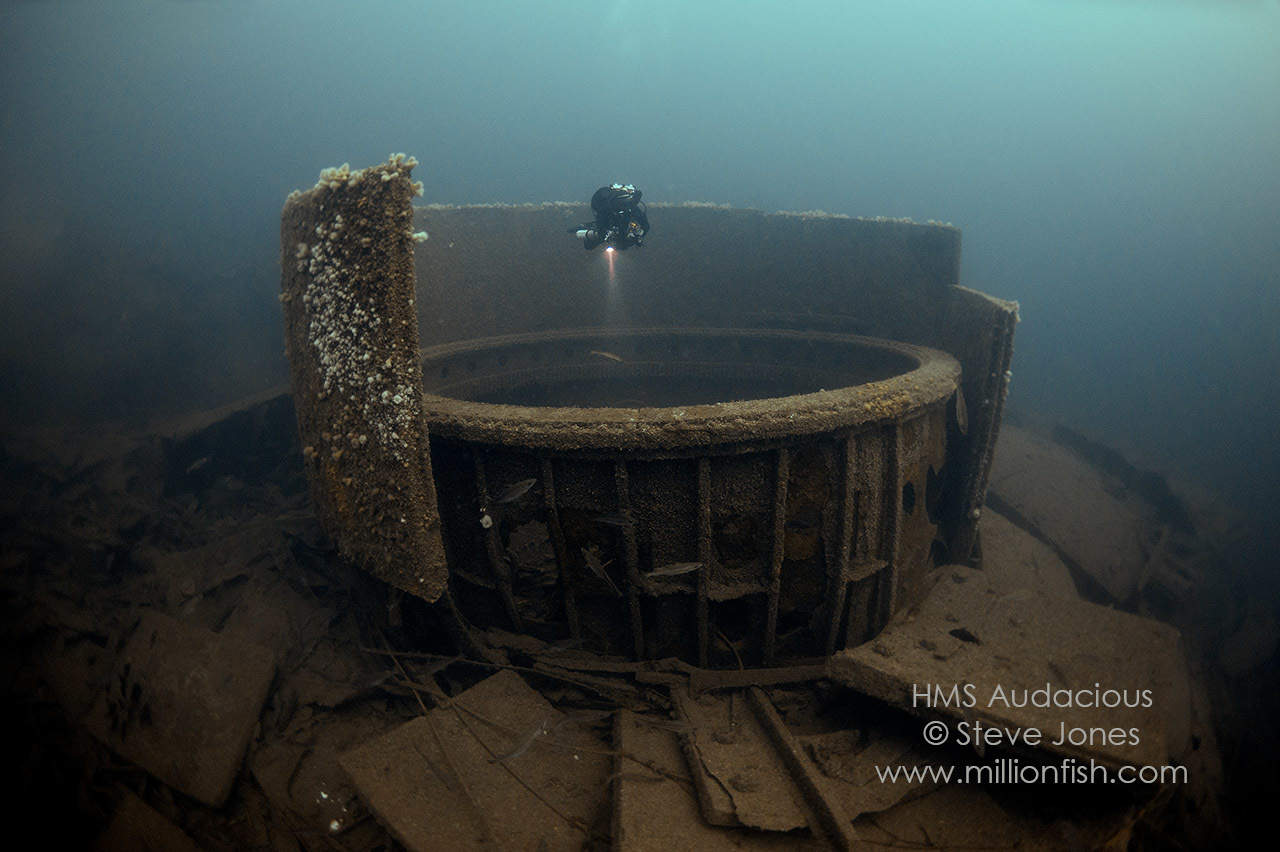
The armoured barbette that housed one of the 5 main gun turrets of HMS Audacious, the first
British battleship to be sunk in WW1
N/C: What image are you most proud of and why?
SJ: It’s actually an image set rather than one image, and that would be of the deep wrecks lying off Malin Head in Ireland. I’d been practicing my techniques for shooting with natural light in deep water for several years, as I like to show the wrecks in their true scale. These wrecks mainly lie between 60 and 70 metres and we only had one dive on each of the most iconic ones. With great team work from my regular dive partner Steve Henshall, we got a set that I was immensely proud of, and it directly led to me being selected as one of the Blancpain Edition Fifty Fathoms photographers.
N/C: Where is your favourite dive location, and is it for the photography?
SJ: I’ve just returned from Cocos and it blew my mind. The diving is simply the best I’ve ever done and I want to go back. For sheer diversity, I love Indonesia and Papua New Guinea. My bucket list is still quite long though…..
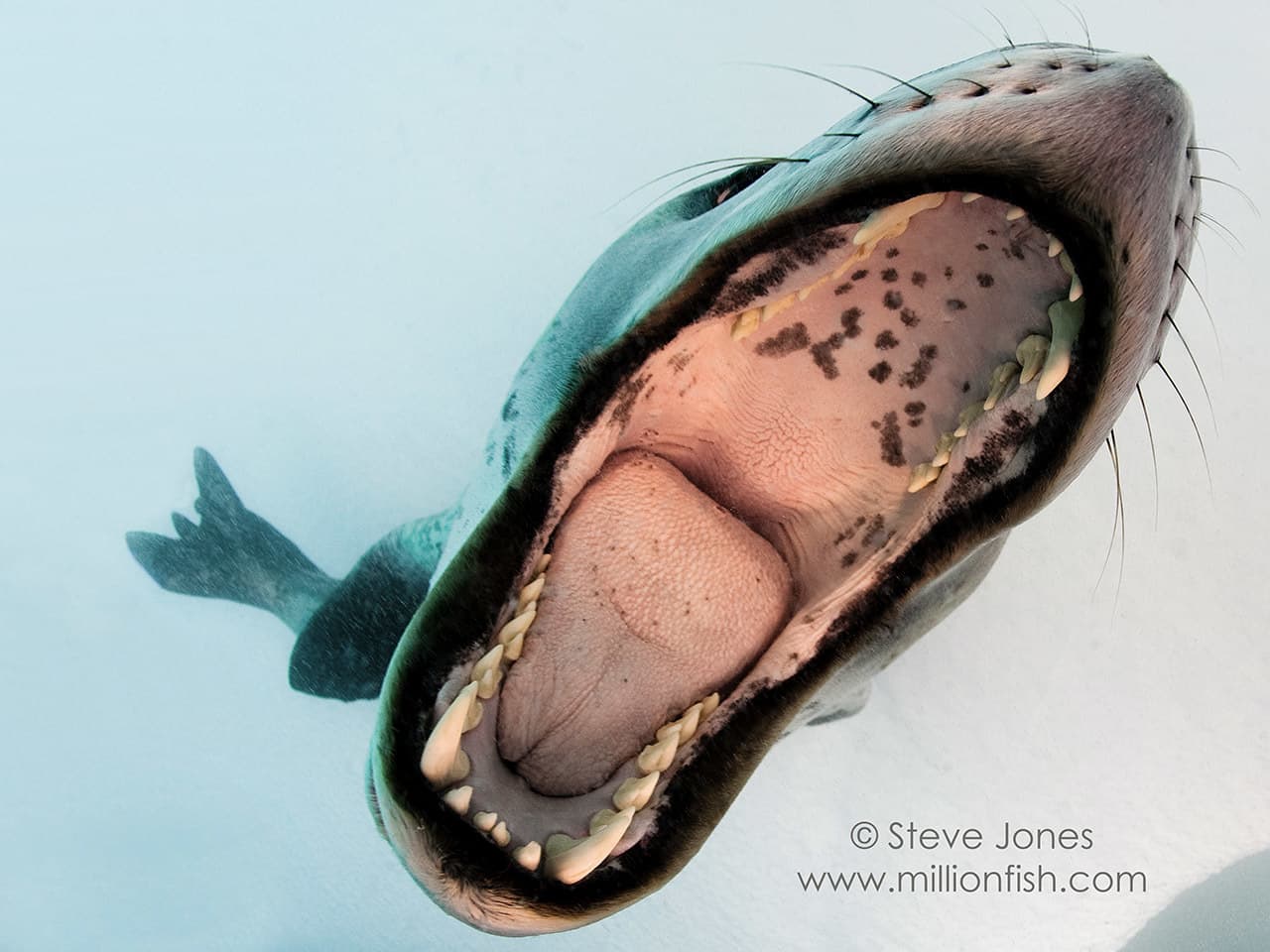
Leopard seal, mouthing its own reflection in the camera port (Hydrurga leptonyx), Astrolabe Island, Antarctica
N/C: What are you views on marine life manipulation, moving subjects?
SJ: Moving and harassing animals sets a disturbing precedent and I firmly believe it goes against the code of conduct that nature photographers should abide by: The animal’s welfare must always come first. However, we need to also keep things in perspective and hold an awareness of all things that impact the marine environment: unsustainable fishing and plastic waste being two of the major ones. At the end of the day it’s all about the ethics you abide by as a marine photographer.
N/C: What do you look for when you are making your images?
SJ: Most of my imagery is captured when on direct assignments for magazines. So first I have to get the “safety” shots in the bag – this is the basic set of publishable quality images that will allow a story to be illustrated and I don’t relax until I have a reasonably good set. Once that objective is met, I let my creativity off the leash and take higher risk shots using less conventional, often experimental techniques and equipment. Overall, I try and capture images that support the subject matter of my story as it makes my writing task much easier if my images are already speaking the words.
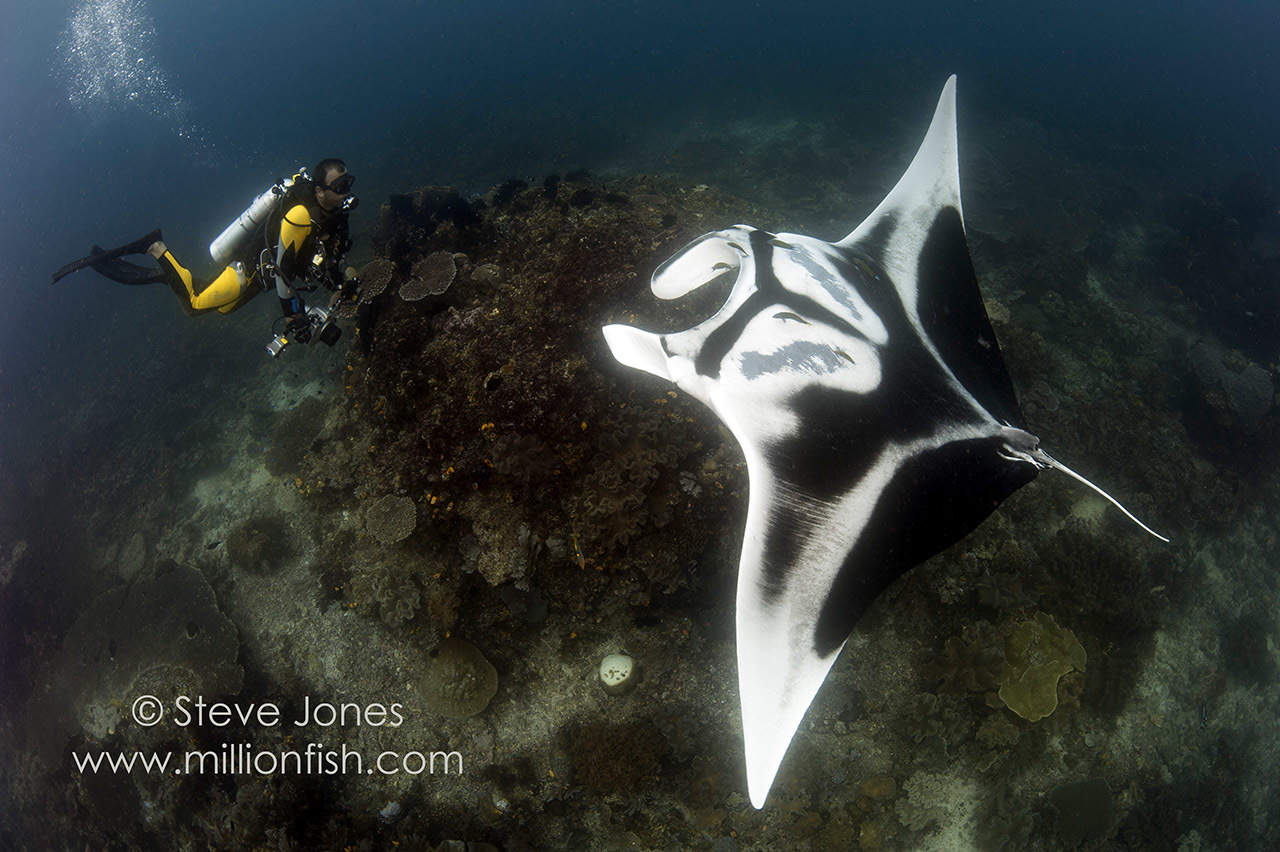
A diver has a very close encounter with a giant oceanic manta ray (Manta birostris), Dampier Strait, Raja Ampat, West Papua, Indonesia
N/C: What motivates you to take u/w photos?
SJ: It’s a creative outlet, a representation of my fascination with wildlife and exploration of the marine world. With wrecks, it is also capturing history: A unique moment in time. At some point in the future, our images will be all that remains of many of the wrecks we now dive. I sincerely hope that the same will not apply to the wonderful marine life we encounter, but it will unless we change our short-term exploitation of this planets limited resources and start thinking more in terms of leaving a home that’s fit for our children to inhabit.
N/C: If you could photograph any one thing/place what or where would that be?
SJ: That would be the Great Whales, a lifelong dream as yet unfulfilled! (They are on my bucket list!)
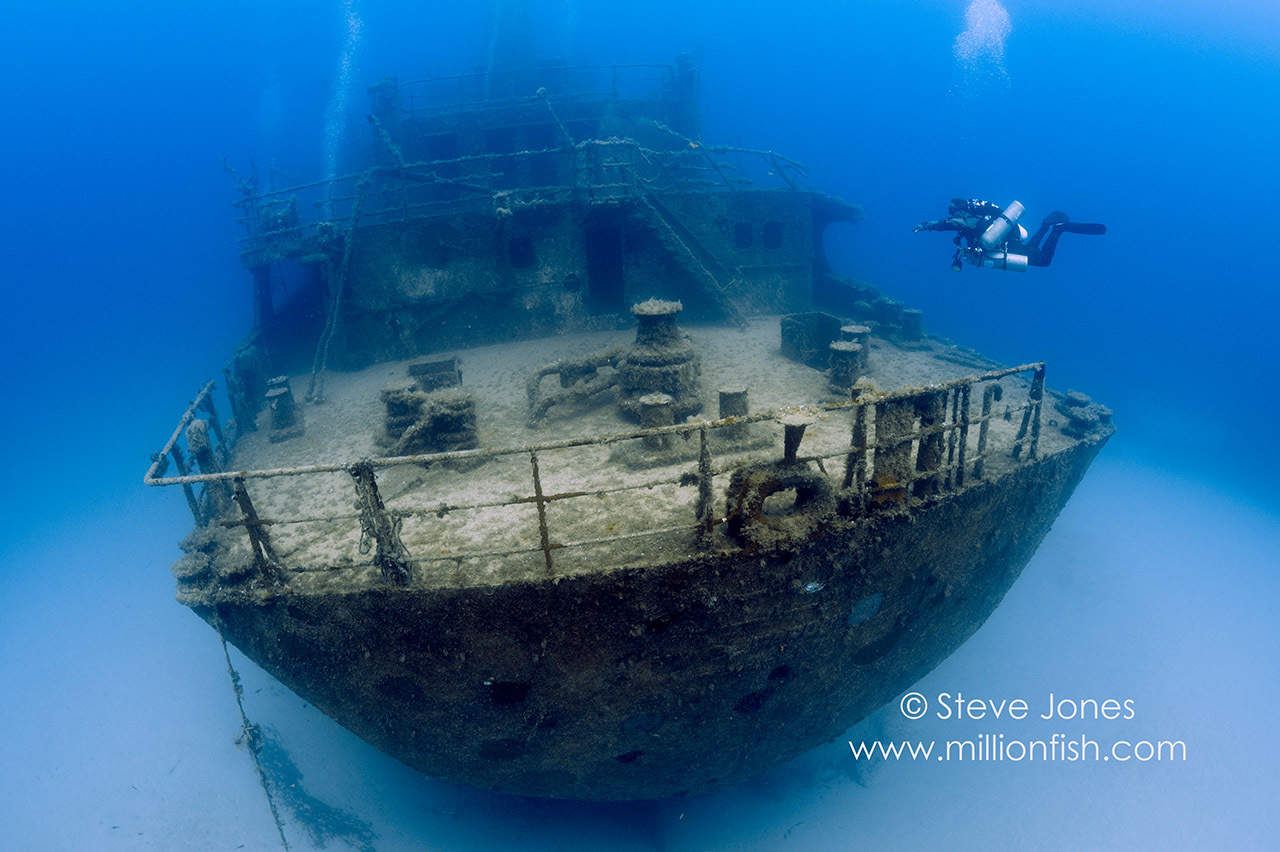
The wreck of the Um El Faroud, Malta.
News
Dive Worldwide Announces Bite-Back as its Charity of the Year

Over the next 12 months, specialist scuba holiday company Dive Worldwide will be supporting Bite-Back Shark & Marine Conservation with donations collected from client bookings to any one of its stunning dive destinations around the world. The independently-owned operator expects to raise £3000 for the UK charity.
Manager at Dive Worldwide, Phil North, said: “We’re especially excited to work with Bite-Back and support its intelligent, creative and results-driven campaigns to end the UK trade in shark products and prompt a change in attitudes to the ocean’s most maligned inhabitant.”
Bite-Back is running campaigns to hold the media to account on the way it reports shark news along with a brand new nationwide education programme. Last year the charity was credited for spearheading a UK ban on the import and export of shark fins.
Campaign director at Bite-Back, Graham Buckingham, said: “We’re enormously grateful to Dive Worldwide for choosing to support Bite-Back. The company’s commitment to conservation helps set it apart from other tour operators and we’re certain its clients admire and respect that policy. For us, the affiliation is huge and helps us look to the future with confidence we can deliver against key conservation programmes.”
To launch the fundraising initiative, Phil North presented Graham Buckingham with a cheque for £1,000.
Visit Dive Worldwide to discover its diverse range of international scuba adventures and visit Bite-Back to learn more about the charity’s campaigns.
MORE INFORMATION
Call Graham Buckingham on 07810 454 266 or email graham@bite-back.com
Gear News
Scubapro Free Octopus Promotion 2024

Free Octopus with every purchase of a SCUBAPRO regulator system
Just in time for the spring season, divers can save money with the FREE OCTOPUS SPRING PROMOTION! Until July 31st SCUBAPRO offers an Octopus for free
with every purchase of a regulator system!
Get a free S270 OCTOPUS with purchase of these combinations:
MK25 EVO or MK19 EVO with A700
MK25 EVO or MK19 EVO with S620Ti
MK25 EVO or MK19 EVO with D420
MK25 EVO Din mit S620Ti-X
Get a free R105 OCTOPUS with purchase of the following combinations:
MK25 EVO or MK19 EVO with G260
MK25 EVO or MK17 EVO with S600
SCUBAPRO offers a 30-year first owner warranty on all regulators, with a revision period of two years or 100 dives. All SCUBAPRO regulators are of course certified according to the new European test standard EN250-2014.
Available at participating SCUBAPRO dealers. Promotion may not be available in all regions. Find an authorized SCUBAPRO Dealer at scubapro.com.
More information available on www.scubapro.com.
-

 News3 months ago
News3 months agoHone your underwater photography skills with Alphamarine Photography at Red Sea Diving Safari in March
-

 News3 months ago
News3 months agoCapturing Critters in Lembeh Underwater Photography Workshop 2024: Event Roundup
-

 Marine Life & Conservation Blogs3 months ago
Marine Life & Conservation Blogs3 months agoCreature Feature: Swell Sharks
-

 Blogs2 months ago
Blogs2 months agoMurex Resorts: Passport to Paradise!
-

 Blogs2 months ago
Blogs2 months agoDiver Discovering Whale Skeletons Beneath Ice Judged World’s Best Underwater Photograph
-

 Gear Reviews2 weeks ago
Gear Reviews2 weeks agoGEAR REVIEW – Revolutionising Diving Comfort: The Sharkskin T2 Chillproof Suit
-

 Marine Life & Conservation2 months ago
Marine Life & Conservation2 months agoSave the Manatee Club launches brand new webcams at Silver Springs State Park, Florida
-

 Gear Reviews3 months ago
Gear Reviews3 months agoGear Review: Oceanic+ Dive Housing for iPhone
















